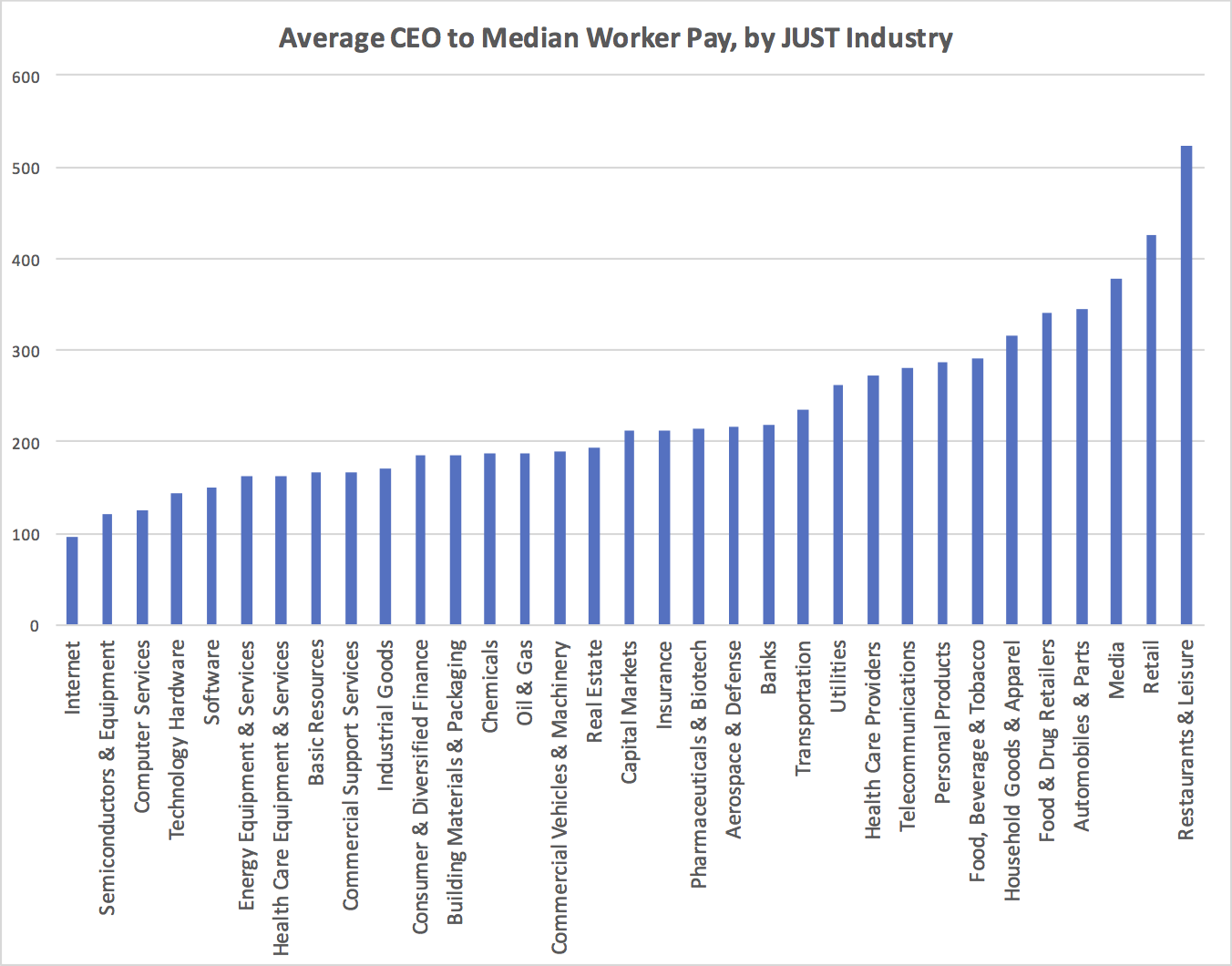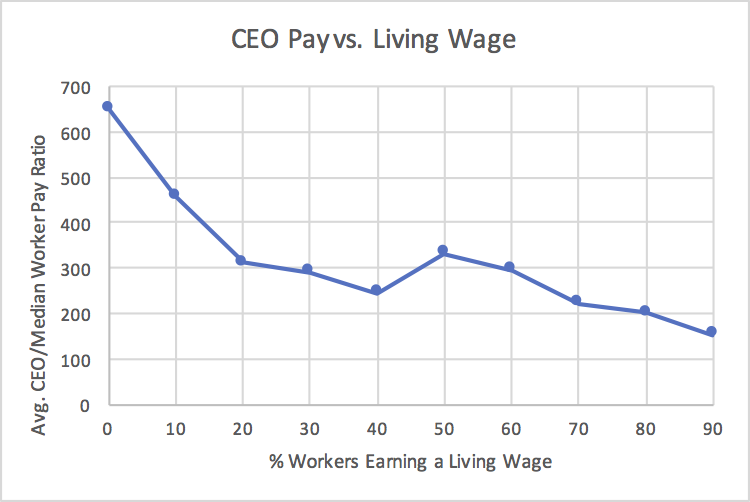What Is Just When It Comes To CEO-To-Average Worker Pay?
After three years of polling, one of the things we know to be true is that Americans view worker pay-related issues as being at or close to the top of the list when it comes to just corporate behavior. Living wage (am I paid enough to support basic living costs?) and fair pay (am I paid fairly for the job I do relative to others doing the same job?) are the most important, but the ratio of CEO pay to “average worker” is also often mentioned as an additional measure of justness.
Last week, in another effort to reverse Obama-era legislation, the Treasury Department recommended the reversal of a Dodd-Frank rule, due to go into effect next year, that requires companies to disclose the pay ratio between CEOs and average workers. Republicans argued that the rule undercuts the market, aims to shame chief executives, and by extension, discourages companies from going public.
The rule, however, would also serve to shed a clearer light on a core issue that Americans care about, and based on research from the Economic Policy Institute, we already know that the CEOs of America’s largest firms earn far more today than they did in previous decades, with CEO compensation having risen a whopping 807 or 937% (depending on how it is measured) from 1978 to 2016. A recent study from The Conference Board showed that the median pay for CEOs of S&P 500 firms was $11.5 million in 2016, up 6.3% from the prior year. Compare this with the decades-long stagnation in real wages for average workers and the 2.9% increase in average hourly earnings for all employees in the private sector last year.

JUST Capital’s breakdown of CEO-to-Median Worker Pay ratios for the top 1,000 publicly traded companies in America provides some fascinating context on the issue. Take the industry comparisons, for example. Ratios tend to be much “lower” (between 100 and 150:1) in technology fields, where workers are paid more on a relative basis and many tech CEOs are company founders with high ownership interest, tending to pay themselves less in salary. At the other end of the spectrum, in Retail and Automobile industries for example, a proliferation of lower skilled workers with lower pay results in very high discrepancies between the earnings of CEOs and workers, in some cases above 400:1.
Based on our own studies, the increasing gap between CEO and employee pay in 2016 may actually be even greater than The Conference Board reports. SEC reporting rules for executive compensation require companies to report stock-based compensation in the year in which it’s granted, not necessarily as its earned. For example, Apple CEO Tim Cook has earned an average of just over $7 million annually over the past five years, but he also received a $376 million bonus in 2011 that does not fully vest for 10 years. Under JUST Capital’s methodology, that bonus would then be spread evenly over 10 years and added to other annual compensation received during that span. Our numbers also include all executives who have held the title of CEO and/or Executive Chairman in a given year, while excluding all one-off cash payments (severance for departing executives and so-called “make whole” payments to new CEOs).
Using this methodology across the 728 companies in the Russell 1000 for which we have compensation data for both 2015 and 2016, median CEO compensation actually increased 9%, more than triple the average hourly earnings for employees in the private sector.
Looking at CEO compensation in proportion to JUST Capital’s estimates for average U.S. worker pay at these companies, the gap continued to widen. In 2016, the median CEO compensation was 204 times that of the average worker, a 7.3% increase from the prior year’s figures.

We also took a look at how this ratio compares to other measures of worker pay. For example, we found that the companies that pay the majority of their workers a living wage tend to have a narrower gap between CEO and employee pay. Conversely, the gap is typically wider for companies that pay only a low percentage of workers a living wage. This stands to reason, as low-gap companies are in higher earning industries where more employees make a living wage.
Coming back to the polling results, it is not clear what a fair or just CEO:Median Worker Pay ratio actually is, or what people think it should be. Ordinary workers are more concerned with putting food on the table for their families and being treated fairly relative to their coworkers. When it comes to CEO pay, however, we think the real moral of the story is not only that the numbers be disclosed, but that we consider them in the context of fair treatment and shared value. High CEO pay may be perfectly fine in situations where companies are doing well financially and all workers are sharing in that. Or where workers themselves feel fairly compensated and make more than a living wage. Where the red flags exist are where too many people do not make a living wage, where CEOs are taking too much of the pie at the expense of workers, or where there is some other obvious injustice or imbalance. Boards of Directors setting executive compensation packages would do well to keep this in mind. Going forward, we’ll continue to track CEO pay ratios, and hope that companies will disclose these numbers, providing transparency on the issues Americans care most about, whether they’re required to or not.






